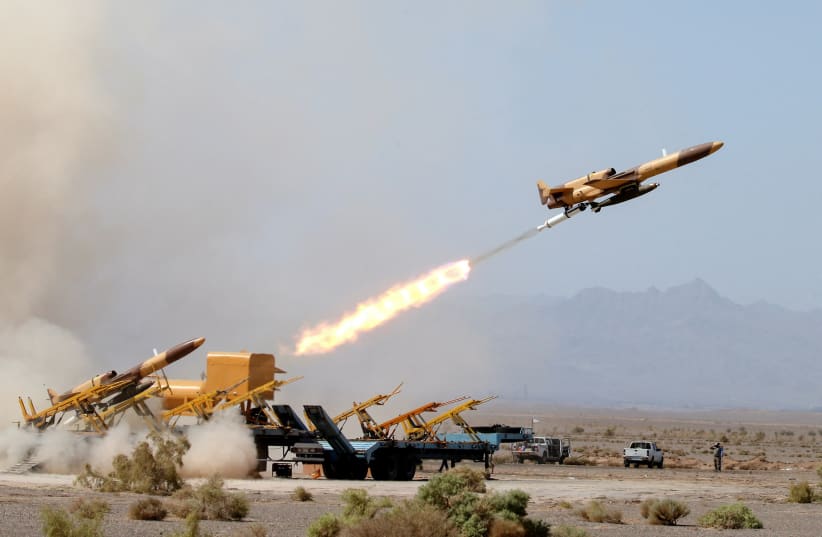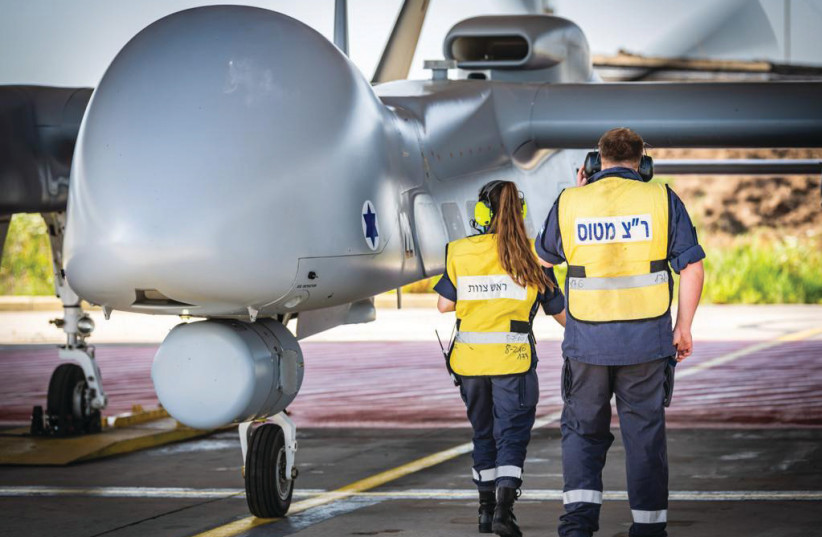Can crowd-sourced information help people detect drones using cell phones? An attempt to do just that was carried out recently. The US Air Force said that “US Air Forces Central partnered with US Army Central, McEntire Joint National Guard Base, and MITRE, to test the operational capabilities of CARPE Dronvm, an Air Forces Central Command initiative developed by MITRE for Counter Unmanned Aerial Systems reporting and alerting.”
According to the reports the app was tested during a “50-kilometer drone flight from McEntire JNGB to Poinsett Electronic Combat Range. The soldiers were stationed at different points along the flight route to identify, photograph, and report the drone using CARPE Dronvm.” US Army Central’s Task Force 39 is one of the key players in identifying new technology to address needs of the forces in the region.
The report noted that “CARPE Dronvm is a Department of Defense funded application developed by MITRE Corporation that uses crowd-sourced information to detect unmanned aerial systems, or UAS. This test used a version of the application on cell phones to detect a UAS. Maj. Travis Valley, the Task Force 39 operations officer, said the potential for crowd-sourced UAS detection increases force protection capabilities,” the report noted.
It was part of an interesting article published by the US Army has detailed an innovative approach to countering drone threats. This is part of a wider attempt by the US to innovate in the use of unmanned systems. The story appeared at the US Defense Visual Information Service (DVIDS). The event took place on July 18 at McEntire Joint National Guard Base and Poinsett Range.
“This CARPE Dronvm test is the largest live test conducted to date,” said Valley, according to the report. “CARPE Dronvm has the potential to provide real time, crowd-sourced data about small, unmanned aerial vehicles to military decisions makers around the globe.” The article said that this is the result of an initiative to “develop systems to detect UAS [unmanned aerial systems]. US Army Central is testing the ability to operate this application at the soldier level.”
Crucial drones for MidEast
This is important in the Middle East and especially in areas the US operates here. This comes under US Central Command. The report notes that in recent years, “the threat posed by UAS increased as malign regional actors continue to use and experiment with this relatively cheap weapons system. Due to its low cost to entry, it is becoming the weapon of choice for potential adversaries resulting in rapid technology proliferation and increased employment.” This matters on a regional scale because US partners and allies are also being threatened by drones.
In another post on the same DVIDS website a member of the US 386th Air Expeditionary Wing is shown using a “counter-unmanned aerial systems technology to electronically disable a small drone during a 386th Expeditionary Security Forces Squadron demonstration at Ali Al Salem Air Base, Kuwait, July 10, 2023.”
The numerous systems being deployed or examined to help counter drones are part of a wider context in the region. First of all, knowledge of the drone threat goes back years. In 2021 then head of Central Command Gen. Kenneth McKenzie Jr. said that small drones posed a major threat. Since then Iranian drones have also been on the radar as a threat in the region. Iran has used drones to attack Saudi Arabia and the UAE, as well as exporting the technology to places like Yemen, Iraq, Syria and Lebanon. Iran has now sent drones to Russia to be used to terrorize Ukraine.
Countering drones has also been part of the wider discussion about regional air defense integration. This could include air defenses in the Gulf but it also has implications for Israel because Israel is an innovator and leader in counter-drone efforts. This includes countering small quadcopters and also larger drones. After the Abraham Accords Israel’s IAI and the company Edge in the UAE signed a strategic agreement back in 2021. Back in 2018 the US defense budget also foresaw cooperation with Israel on countering drones.
All this adds up and it is clear that most countries are now aware not only of the drone threat but are putting a lot of technology in the field to deal with the threat. These innovations matter and they will continue to be important in the Middle East. This is despite the fact there is a new diplomatic era in the region and many countries are seeking to tone down the conflicts that divided the region over the last decades.

